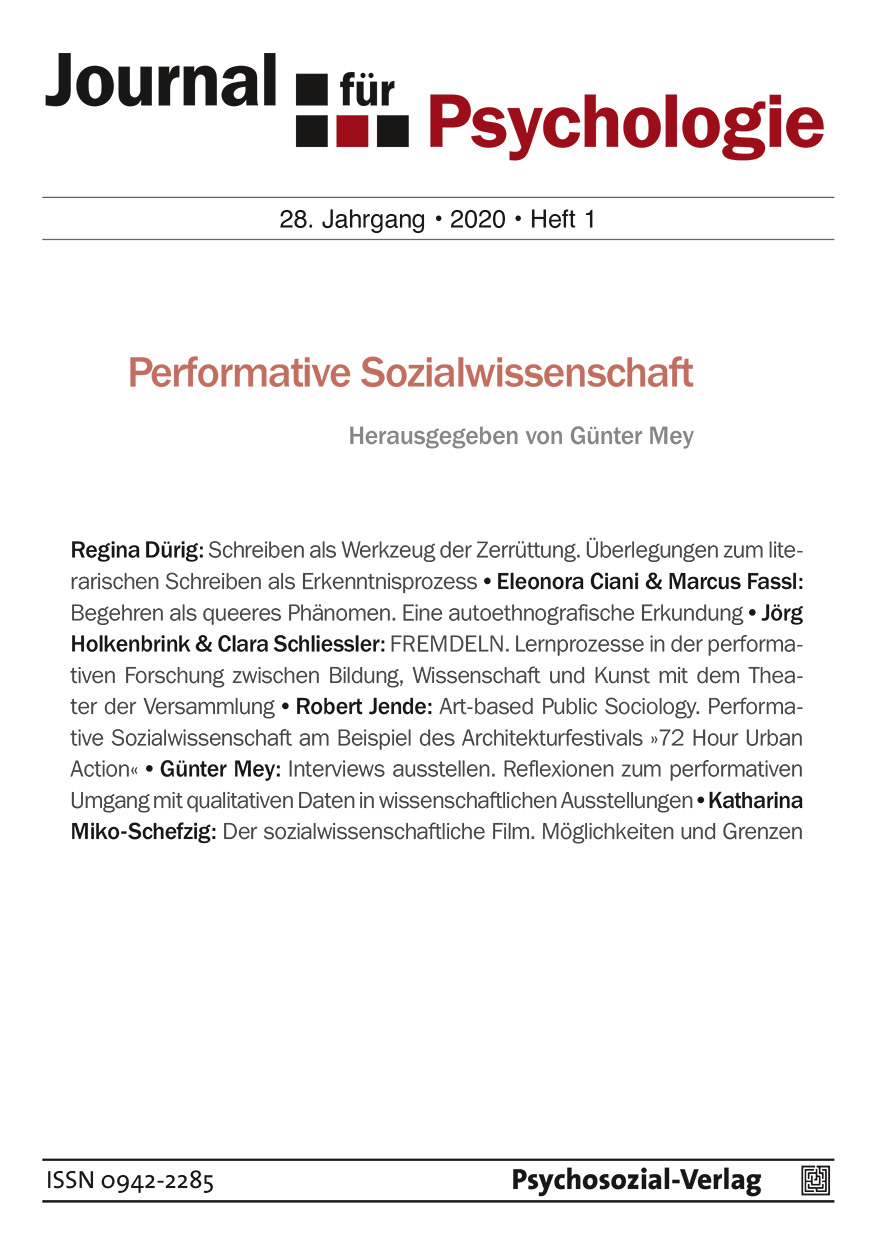Desire as queer Phenomenon
DOI:
https://doi.org/10.30820/0942-2285-2020-1-46Keywords:
desire, psychoanalysis, queer theory, new materialisms, autoethnography, performative IAbstract
Defining desire generally remains quite a cumbersome task due to the multiplicity and versatility of its conceptual nuances. Although queer theory has debunked many of the fundamental assumptions underlying continuities between categories such as sex, gender, sexual practice and desire as discursive-linguistic constructs, material dimensions concerning desire have yet to be adequately investigated. This paper portrays an autoethnographic journey through landscapes of desire and links personal experience to several approaches that the authors came across in the course of their research. Incorporating creative strategies of knowledge production into a queer-feminist reading of new materialisms can widen perceptions of desire and offer valuable insights into how and where desire might occur.Downloads
Published
2020-05-18
How to Cite
Ciani, Eleonora, and Marcus Fassl. 2020. “Desire As Queer Phenomenon”. Journal für Psychologie 28 (1):46-66. https://doi.org/10.30820/0942-2285-2020-1-46.
Issue
Section
Schwerpunkt
License
This license allows private use and unmodified distribution, but prohibits editing and commercial use (further information can be found at: https://creativecommons.org/licenses/by-nc-nd/4.0/).
The terms of the Creative Commons licence only apply to the original material. The reuse of material from other sources (marked with a reference) such as charts, illustrations, photos and text extracts may require further permission for use from the respective copyrights holder.



